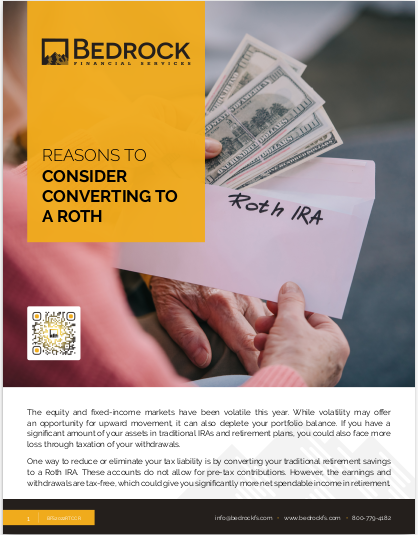Key Takeaways
-
If your email marketing isn’t working, it’s likely due to format—not frequency. Adjusting how you present your message can drastically improve client engagement, appointment bookings, and overall client satisfaction.
-
In 2025, financial clients expect simplicity, clarity, and relevance. Using outdated or overly corporate email templates can make you invisible in their inbox and signal that your approach is stuck in the past.
Why Format Matters More Than Ever
Email still works. In fact, it remains one of the most cost-effective and scalable ways to connect with clients. But the old ways of using it—long blocks of dry content, excessive graphics, and promotional-sounding subject lines—don’t. Your clients don’t skim, scroll, or respond unless something immediately signals: “This was written for me.”
Today’s clients are flooded with noise. Financial advice competes with news alerts, personal messages, spam filters, and algorithm-driven feeds. Your message needs to cut through that by matching how clients consume content now—on mobile, in short bursts, and with emotional cues.
Emails that feel human, relevant, and easy to digest are far more likely to be opened, read, and acted upon. That’s why format is now your most powerful advantage.
Let’s break down the formats that work now—and how you can start using them immediately.
1. The 60-Second Value Format
Clients don’t always have time for lengthy updates. This format focuses on delivering one point in under a minute. It’s ideal for quick market insights, deadlines, contribution reminders, or urgent updates about regulation changes.
Structure:
-
Subject Line: Pose a clear question or benefit
-
Opening Line: One sentence that tells the reader what they’ll get
-
Body: 2–3 sentences max, concise and actionable
-
CTA: One link, phone number, or button that makes the next step obvious
Why it works:
-
Quick read
-
Mobile friendly
-
Keeps your name in their inbox without overwhelming them
-
Reinforces your role as a time-saving professional
Use this format when you want to stay top of mind and be seen as proactive without writing a full newsletter. It’s best deployed weekly to keep communication light and helpful.
2. The Plain-Text Personal Update
Graphics can be useful, but they often scream “marketing email.” In contrast, plain-text emails feel like a direct message from one person to another. It’s especially effective when checking in after a consultation, sending a reminder about paperwork, or following up on interest in a product or planning service.
Structure:
-
Subject Line: Use your voice, not marketing buzzwords (“Quick check-in” vs. “Your Financial Update”)
-
Opening: Use the client’s name and make the tone personal
-
Body: Keep it conversational and specific to their situation
-
Closing: Invite a short reply (“Does this sound good to you?”)
Why it works:
-
Feels 1-on-1
-
Higher deliverability
-
Encourages actual responses
-
Builds trust through familiarity
This format works best for prospect follow-ups, nurturing dormant leads, or reconnecting with clients who haven’t engaged in a while.
3. The Narrative Explainer
Stories cut through noise. If you want to educate, persuade, or build credibility, tell a short story instead of listing stats or quoting economic forecasts. This style helps frame abstract concepts into concrete, relatable scenarios.
Structure:
-
Subject Line: Tease the story (“What happened when…”)
-
Hook: Start with a relatable situation or problem (no real-life details, just typical experiences)
-
Lesson: Tie the scenario to a financial takeaway
-
CTA: Invite them to talk about their own situation
Why it works:
-
Emotion drives memory
-
Helps simplify complex topics
-
Builds connection through familiar language
-
Makes your value tangible without selling
This format is ideal for communicating long-term financial strategies, preparing for retirement, or introducing newer concepts like Roth conversion ladders or phased withdrawals.
4. The Weekly Micro-Series
Instead of cramming everything into one monthly newsletter, break a topic into digestible parts over a few weeks. Clients are more likely to open a four-part series than one email that tries to do it all.
Structure:
-
Subject Line: Part-based (“[1/4] How to Think About Retirement in 2025”)
-
Body: One main idea per email, no fluff
-
CTA: Tease the next part and invite questions
Why it works:
-
Builds anticipation and consistency
-
Keeps content focused
-
Easier to write and repurpose
-
Reinforces your expertise with a consistent voice
Use this format for themes like TSP withdrawal options, tax optimization over retirement, or annual financial checklists. You can plan quarterly series that align with seasonal planning opportunities.
5. The Hyper-Relevant Reminder
These emails are short, date-driven, and urgent. Their only job is to help the client avoid a problem or take advantage of a window. This is where your knowledge of timelines becomes a service in itself.
Structure:
-
Subject Line: Specific and time-sensitive (“Only 2 Days Left for This IRA Move”)
-
Body: Short explanation of what’s at stake and why it matters
-
CTA: Immediate action step with urgency
Why it works:
-
Clients appreciate timely alerts
-
Triggers action without needing education
-
Reinforces your role as a proactive guide
-
Reduces risk of missed opportunities
Use this for contribution deadlines, annual reviews, enrollment periods, plan updates, tax-loss harvesting, or changes in retirement law.
6. The Client-Centric Q&A
Instead of guessing what clients care about, pull questions from real interactions and answer them in email form. This not only educates but validates their concerns.
Structure:
-
Subject Line: Use the question (“Should I worry about market drops?”)
-
Body: Acknowledge the concern, provide a balanced answer, and relate it to the reader
-
CTA: Invite them to send their own questions or schedule a chat
Why it works:
-
Positions you as helpful, not salesy
-
Promotes conversation and trust
-
Can be reused as blog, podcast, or social content
-
Makes you a thought partner
You can rotate this format into your schedule monthly. Consider batching 10 client questions and writing short, stand-alone responses you can reuse throughout the year.
7. The Visual Breakdown (But Not a Flyer)
Sometimes a single image or chart can say more than a 500-word email—but not if it looks like a brochure. Use clean, simple visuals to explain processes, timelines, or trade-offs.
Structure:
-
Subject Line: Lead with benefit (“This Chart Can Help You Plan Withdrawals”)
-
Body: Short intro + image + short analysis or insight
-
CTA: “Want me to walk you through it?”
Why it works:
-
Appeals to visual learners
-
Breaks monotony in inbox
-
Encourages appointments for further explanation
-
Enhances understanding of layered decisions
Ideal topics include required minimum distributions, long-term care planning timelines, debt payoff schedules, and financial milestones by age or income.
8. The Monthly Pulse Check
This format gives a high-level overview of what’s changed and what matters right now. It’s best used for a regular rhythm that keeps clients in the loop without them needing to reach out.
Structure:
-
Subject Line: Month + theme (“June 2025: 3 Moves Worth Considering”)
-
Sections: Market note, rule change, personal finance tip, and one clear CTA
Why it works:
-
Predictable rhythm builds habit
-
Establishes authority without flooding inbox
-
Easy to forward or share with referrals
-
Offers context for financial decisions
Use this as your anchor email format—once per month—then layer in more specific formats above for a full communication mix.
9. The Client-Win Recap
When a general approach leads to a positive outcome (not tied to a real case), share it. Focus on the result, not the product.
Structure:
-
Subject Line: Outcome first (“How This Strategy Saved a Client 5 Years of Tax Pain”)
-
Body: Scenario → Approach → Result (no personal identifiers)
-
CTA: Ask if they want something similar or a personalized review
Why it works:
-
Shows proof without overselling
-
Highlights expertise through outcomes
-
Promotes exploratory conversations
-
Inspires action from similar clients
This format is especially useful at the end of each quarter. Reflect on your top outcomes and turn them into insight-driven stories.
Make Format a Habit, Not a Gimmick
Using better formats isn’t about chasing hacks. It’s about respecting your clients’ time, attention, and inbox behavior in 2025.
If you’re always wondering why open rates are low, or why no one replies, look to your structure. Are you writing like a newsletter? Or like a person with something relevant to say?
Once you start using these formats consistently, you’ll see:
-
Higher open and response rates
-
More appointment bookings from emails
-
Clients treating your emails as helpful, not spam
-
Increased client satisfaction over time
Consistency beats creativity when it comes to format. Pick 2–3 formats that align with your voice and your clients’ needs, and commit to using them weekly or bi-weekly. Create a calendar that rotates formats and automates follow-up where possible.
Give Clients What They Want—Not What You Think They Need
Email isn’t dying. It’s evolving. And the professionals who evolve with it are the ones clients want to hear from.
If you want your emails to get opened, read, and acted on, format is your secret weapon—and it’s one you can start using immediately.
At Bedrock Financial Services, we help professionals like you use email more effectively with done-for-you templates, automation tools, and strategic guidance that aligns with the way your clients think, read, and act.
We’ve built systems that turn overlooked formats into your most valuable assets. Sign up today to see how we can help you stand out—one email at a time.







